We are glad to have you here today for the discussion on how to know if your wheel bearing is bad. In this article, we will delve into the many symptoms that can help you spot a bad wheel bearing and give tips on how to repair it. Whether you are skilled in mechanics or you just want to give it a go in the do-it-yourself approach, knowing how to spot a bad wheel bearing is key to your car’s safety and performance. By arming yourself with the said symptoms and ways to check if a wheel bearing is bad, you will be in a position to solve any problems that arise so as not to aggravate them. So, let us get started so that we can understand the hows and why’s revolving around diagnosing, identifying, and solving wheel bearing problems.
What are the Common Symptoms of a Bad Wheel Bearing?
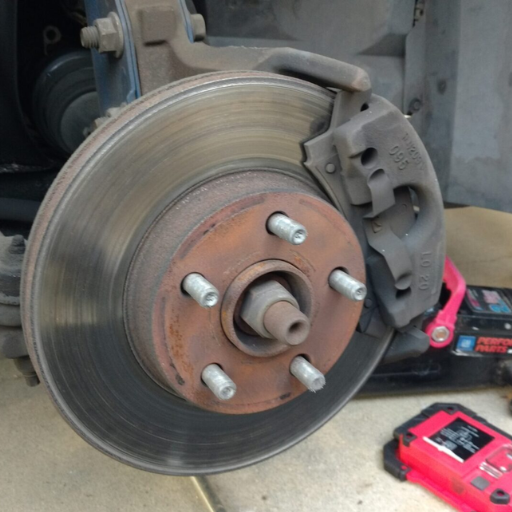
Let us now contemplate the more deep-seated characteristics of a bad wheel bearing. I can affirm that understanding these signs is fundamental to guarantee that you are not putting your vehicle at any risk due to abnormal functioning. Let us now consider how this forging inside the brace will cause various symptoms and mechanisms whereby you can address them before any further damage is caused. Here are the main ones:
- Wheel Bearing Noise: A damaged wheel bearing makes an unusual noise when the vehicle is in motion; this is one of the common signs of a damaged bearing. Look for any grinding, humming, or growling sounds that are not normal while the vehicle progresses.
- Vibration: A bad wheel bearing can lead to vibration in the steering wheel or elsewhere in the whole vehicle. If you observe any shaking, coupled with acceleration, especially with speed, turning the vehicles bearing, it has a problem.
- Impact on Tire Wear: A screwed bearing can cause improper wear and tear of tires. A bad wheel bearing may give rise to extensive unnatural wearing of tires, for example, tow-aged on either side of the tire or uneven patches on either side.
The understanding of these indicators enables you to solve any possible wheel bearing issues and keep your vehicle safe and efficient. Now, let us see this time how to troubleshoot once a wheel bearing goes bad.
Recognizing Wheel Bearing Noise: What to Listen For
there is a likelihood of you asking this question – what are the tell-tale signs of a faulty wheel bearing? One of the most prominent signs is unusual noise coming from the wheels. By focusing on any particular sounds your vehicle is making, you can pinpoint any potential issues with the wheel bearing before they worsen. This is what you need to pay close attention to:
- Humming or Growling Sound: As the wheel bearing suffers mechanical failure, it makes a constant growl or hum that fluctuates according to the speed of the vehicle. Such sound is known to resemble that of a faint aircraft engine heard in the distance.
- Grinding or Screeching Noise: Bearing issues can also arise if the wheel bearing gets damaged or doesn’t get lubricated. This leads to the creation of a screech or grinding noise whenever the vehicle turns, indicating the presence of dry portions inside the bearing.
- Clicking or Clunking Sound: Quite rarely, some turning or lane changing activities may cause a clicking or a clunking sound, which could emanate from a malfunctioning bearing. This can be regarded as an excessive fore-and-aft play or amplitude within the bearing exploded assembled parts.
Identifying these peculiar wheel bearing sounds can help you avert any probable problem, thereby ensuring the safety and durability of your car.
Identifying Vibration and Its Connection to Wheel Bearings
it is important to note that the first step in solving any problem with your vehicle is precisely diagnosing the vibration and its cause if it correlates with any wheel bearing. Vibration, in most cases, felt in the car while driving can suggest a problem with the wheel bearing. The vibration may present itself in the following forms:
- Steering Wheel Vibration: You may experience a vibration through the steering wheel which might be a result of a defective wheel bearing. Depending on the level of deterioration of the bearing, this vibration can be minor or quite significant.
- Vehicle Body Vibration: In certain scenarios, you may experience vibrations in the car as a whole and not just in the steering. This means that several wheel bearings have problems such as wear or damage.
In the presence of vibrations, schedule an inspection and repair for your wheel bearings without delay. Do not take it lightly as such negligence can create more harm and can even pose potential threats to safety. The condition of your wheel bearings should be examined by an expert mechanic who can also perform the requisite repairs or replacements towards proper functioning of the vehicle.
How do you check for a bad wheel bearing?
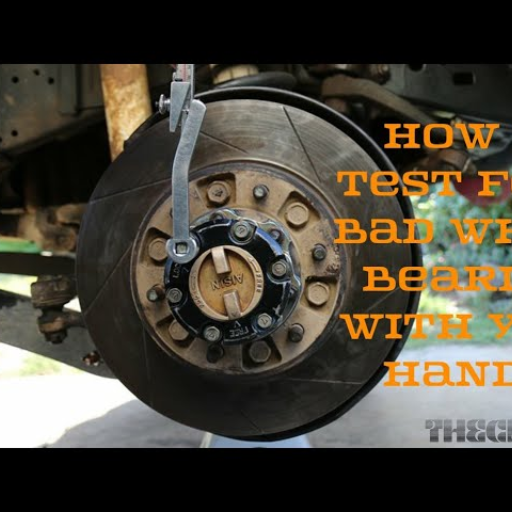
let us now discuss how to check for a bad wheel bearing. First, there are a couple of procedures that you can utilize to evaluate the condition of your wheel bearing and if it needs to be replaced. Also, it is important to note that good tire practices not only enhance safety but also make tires last longer.
- Steps to Jack Up the Wheel Safely: Start by lifting the side of the vehicle that has the bearing that requires replacement. Lift the vehicle using a good jack and put it on jack stands before proceeding.
- How to Grab the Tire and Detect Play in the Bearing: As the wheel is suspended above the ground, grip the top and bottom of the tire, at 12 and 6 o clock and try moving it side to side. Any such excessive movement would indicate that the wheel bearings are probably damaged or worn out and need replacements.
- Methods to Turn the Wheel and See if the Noise Changes: Even after lifting the wheel off the ground, use your hands to rotate the wheel and note down any unusual sounds that the wheel produces. If there is, then it indicates that it has a faulty bearing which in turn needs to be replaced.
You can make an initial evaluation whether a wheel bearing is bad or not by using these techniques, but for anything serious, make sure you turn up at a mechanic to get the tools you need since they know how to exactly fix Issues with wheel bearings. This process will ensure you have a hassle free drive.
Steps to Jack Up the Wheel Safely
A bad wheel bearing can be quite difficult to repair, but first you’ll need to figure out how to safely lift the wheel. If you’re having issues, there are a number of relevant steps which can help guide you during the process. Here’s a condensed answer on where to start lifting the wheel:
- Find a Level Surface: As you follow the given procedures, kindly be sure your vehicle is on a level parking surface and be sure to set the parking brake as to prevent your car from moving.
- Use Wheel Blocks: Use a wheel block on the opposite tires so as to prevent the car from rolling.
- Locate the Jacking Point: Look up the specific jacking point for the wheel that you are checking in your manual.
- Assemble the Jack: To assemble the jack, check that all parts of the jack are functional and in good condition.
- Position and Lift: Carefully lift the vehicle by placing the jack beneath the jack point till the tire leaves the ground.
- Secure with Jack Stands: Use jack stands beneath the vehicle to ensure added safety and further lower the vehicle onto the jack stands.
- Gently Test for Play: To check the bearing, first remove the wheel and then, using your palm on the 12 O’clock position and palm over the 6 O’clock position, move the wheel slightly back and forth. If there is any movement, then the wheel bearing is faulty.
It’s worth reiterating these steps are just a guide and do not replace a professional mechanic. For a problem-free and secure driving experience, be it smooth steering or smooth driving and the like, be sure to first check and repair if necessary, seek out a professional. With the right skills and equipment, they are able to identify and fix any problems relating to your wheel bearings.
How to Grab the Tire and Detect Play in the Bearing
checking play in the wheel bearing by gripping the tire and inspecting for excessive movement is fundamental when evaluating the condition of your bearings. In doing so, ensure you make the following checks:
- Make sure you are holding the tire securely at the 12 o’clock and 6 o’clock positions.
- Gently push one side of the tire and see if it moves the other side with it.
- Notice any movement in the wheel.
- Free play in the wheel indicates a defect in the bearing system.
Keep in mind, provided that you use mechanics tools properly and integrate them thoroughly by consulting a good technician, you can have a lot of information concerning the car wheel (including bearing and other things) from just this primary check.
Methods to Turn the Wheel and See if the Noise Changes
If you want to analyze if you have a possible wheel bearing problem, a test that you can do is to turn the wheel and see if the noise produced changes. Always begin by lifting the vehicle and putting it on jack stands. Then, with the engine off, rotate the steering left and right carefully, noting any changes in the noise level. This is an indication that the wheel bearing could potentially be faulty. This is a red flag. Remember that this is a preliminary check, and a look from a qualified mechanic is necessary to make the necessary repairs for the safety of the user.
What Causes Wheel Bearing Failure?
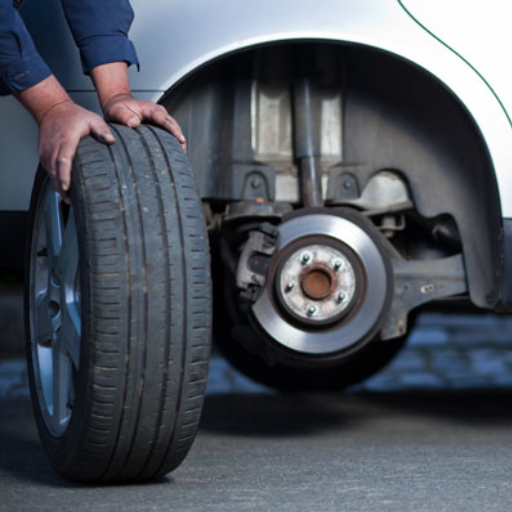
I am aware that the failure of a wheel bearing can stem from various sources. Below are some reasons that wheel bearings tend to fail:
- Lack of Lubrication: Failure to perform routine maintenance or improper lubrication will often contribute to inadequate lubrication and overheating of the wheel bearings. For a bearing to wear for a long time, it is effective to always have the correct amount of lubricant injected into the bearing.
- Contamination: One of the leading causes of bearing failure is the contaminated grease from dirt, moisture and other debris. It’s important to ensure that the wheel bearings are kept free from dirt and moisture to prevent contamination.
- Excessive Heat: Excessive heat can lead to bearing failure; excessive braking and overloading of the bearing are a few ways in which there may be lubricant grease breakdown. Therefore, excessive temperature should be avoided to ensure the wheel bearings can function properly in the future.
- Improper Installation: Failing to follow the manufacturer’s procedures and using the wrong tools can lead to the bearings being mounted incorrectly, overtightened, or misaligned, which is not advised as it places unnecessary stress on the bearing. For knee bearings to work properly without any damage, an appropriate installation is a must.
- Normal Wear and Tear: With strenuous usage and distance traversed, all components of a vehicle naturally tend to succumb to wear and tear with time. Wheel bearings, for instance, will over time reach their expiration point, regardless of the state of upkeep they were subjected to. In this regard, regular inspections and changing them out as they wear out are essential for true safety while driving.
Skipping steps to understand the causes that lead to the wheel bearing failure may be detrimental; however, systematic investment in the understanding of these causes can eliminate the probabilities of the wheel bearing failure and make sure the components are reliable for extended use in a vehicle.
Environmental Factors Contributing to Bearing Failure
In your case, I believe you are already familiar with the fact that, there are many environmental factors that can result in the bearings failing. It is very important to understand and address these factors in order to avoid unnecessary damage to the wheel bearings. Here are some key environmental aspects which may cause the bearing to fail:
- Moisture and Contaminants: Rain, snow, or splashes from the road can infiltrate the bearings and lead to corrosion around the wheel bearings, mud, debris or dust can also get inside the bearings and cause friction damage.
- Extreme Temperatures: Any temperature extremes including hot and cold affects the load capacity and the durability of the wheel bearings, if the viscosity of the wheel bearing lubricating grease decreases due to high temperatures, the wheel bearing durability improves at the cost of heat friction which is also bad. Even low temperatures cause grease to thicken that lacks in being lubricated properly and would not be durable.
- Harsh Driving Conditions: Rough driving, hitting potholes, even walking on terrains puts additional pressure on the wheel bearing which causes stress and intense vibrations and impacts that can make the bearing fail quickly.
- Chemical Exposure: The use of road salt, oils, and even cleaning agents can make the wheel bearing lose the quality that makes them durable which would cause them to fail.
In conclusion, preventive measures such as cleaning, lubrication, and refraining from aggressive driving maneuvers can lower the chances of the bearing failing, which will, in turn, help to prolong the lifespan of your car’s wheel bearings.
The Role of Poor Maintenance in Wheel Bearing Wear
I cannot emphasize enough the contribution of insufficient maintenance to the degradation of wheel bearings. Skipping out on the routine maintenance and servicing of wheel bearings contributes immensely to the excessive wear and tear of these components. A few points of this nature merit attention:
- Lack of Lubrication: The wheel bearings are crucial components and require correct lubrication because with proper lubrication it is possible to overcome friction and heat accumulation in wheel bearings. Occasionally lubricating the bearings or a lack of adequate lubrication may result in excessive friction and wear of the bearings and this in turn increases the rate of loss of the bearings.
- Contamination: Drum bearings may also be infiltrated or damaged by contaminating particles such as jet fuel, dirt, oil, water, and dust. These, to some extent, have the effect of corrosion, increased wear, and cause failure in the bearings after a long time.e
- Extreme Driving Conditions: Driving the vehicle in extreme driving conditions, like in the mud or offroad conditions, will affect the wheel bearings. The constant shock and motion caused vibration which will in turn cause damages and wear out the bearings resulting to the bearings’ failure.
- Chemical Exposure: Direct contact of bearings with harsh chemicals, including road salt, cleaning solutions, and oil, can damage the wheels, and non-skilled washing of the wheels can cause the bearings to wear out fast and fail.
Barring and ensuring the service life of the wheel bearings of a vehicle is an important goal which can be achieved by being mindful of the environmental limitations, including proper routine maintenance, consistent washing, as well as refraining from using the vehicle in harsh conditions. Maintenance and care do cost, but without them, one runs the risk of future expensive repairs and worse still, safety risks.
How to Replace Wheel Bearings?
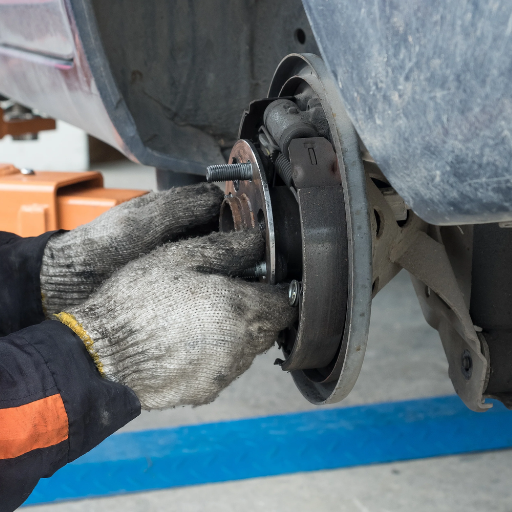
In the expert’s view, the procedure for changing wheel bearings can be subdivided into a number of steps:
- Prepare your vehicle: Before beginning any work, gather a socket set, a jack, and jack stands. Drive the vehicle to level ground and set the parking brake.
- Remove the wheel: Now, it is time to take off the wheel. For this, loosening the lug nuts is important first to the point that they can be easily removed. After that, whichever the vehicle elevating tool, in this case, the jack is used to do the lifting, and jack stands are fixed for proper support. All this now allows the removal of the lug nut and wheel.
- Access the wheel hub: In order to be able to reach the wheel assembly hub depending upon the type of vehicle you have and there are times you need to take off the brake caliper and rotor first. These important details can be found in the manual of the vehicle.
- Remove the old wheel bearing: Proceed to remove the bolts or fasteners or the clips which might have held the old wheel bearing and the assembly of the wheel hub to the axle shaft or the steering. This will enable you to take off the old wheel bearing.
- Install the new wheel bearing: The bearing surfaces should be cleaned properly before a thin layer of high temperature grease is applied. The final step in this process is the fixing of the new wheel bearing into the hub assembly of the wheel.
- Reassemble the wheel hub: Follow the reverse order when installing the wheel bearing and its components. Then use the relevant bolts or bolts to secure the shaft of the axle or the assembly of the wheel hub to the steering chuckle.
- Reinstall the wheel: Reposition the wheel on the hub, and then hand-tighten the lug nuts. With the first part completed, it is time to remove the vehicle from the jack stands. Also, finish off by tightening the lug nuts in a crisscross direction.
- Test the new wheel bearing: Go for a short drive and check if there are any noises coming from the quarter panel areas. Note what is unusual or doesn’t seem right.
Take into consideration, however, that this is the broadest of the overviews and there are other vehicle makes as well as models which might have different specific requirements to follow. Also, consulting a manual or a professional is more reliable for wheel bearing replacement.
Choosing a Quality Replacement for Your Automotive Needs
When it comes to automotive wheel bearing replacement, a crucial decision involves selecting a professional and dependable automotive replacement part — for optimal performance and safety. As an industry expert, I would like to point out a few factors to consider when doing so:
- Quality and Durability: Buying a high quality bearing for your car wheel is very important for the durability of the product. In case one decides to buy from companies that are recognized, one would want to buy from a company that sells reliable products and has high ratings.
- Compatibility: Check that the wheel bearing replacement is suitable to the specific car model you have. For proper fitment, we suggest you check your vehicle manual or get an expert to provide the correct information for you.
- Seal Design:Consider the type of seal used in the design of bearing, particularly the wheel seal. Good sealing of the bearing allows it to work for long by preventing the entering of foreign materials which can clog it up and lead to failure.
- Precision Engineering: Seek parts where the manufacturers have ensured that proper engineering has been done on the part to ensure it meets a threshold and works well with other components. This allows for good fitting accuracy and lubrication mechanism and general functionality to be improved.
- Warranty and Customer Support: You are advised to buy car wheel bearings from suppliers or dealers who supply them with a guarantee and offer excellent support services. It gives one a good feeling knowing that when a person buys a product from that manufacturer or supplier, one does not have to worry about any issues or concerns.
For a comfortable and secure drive while extending the life of your possession, these points must be considered when selecting a decent replacement wheel bearing.
Step-by-Step Guide to Wheel Bearing Replacement
Due to my vast knowledge and personal experience with the concept of wheel bearing replacement, I am going to provide you with a succinct step-by-step process for bearing removal:
Get ready to work on your wheel bearings with a wheel bearing replacement kit, a jack, jack stands, a lug wrench, a socket set, and a torque wrench. First things first- Before you start working on any vehicle, make sure the vehicle is parked on an even surface, engages the parking brake, and then raises the vehicle using a jack. This allows for a safer way to begin the working process to ensure you remove the necessary components. Use a lug wrench to loosen the lug nuts that are on the wheel and proceed to remove the wheel. Depending on how your vehicle has been set up; you might need to remove parts such as the brake caliper and rotor to allow better access to the wheel bearing assembly, make sure to proceed with care to ensure all components are undamaged when being worked on.
This task is surely complex but allows one to understand the process of replacing one of the most essential parts; Start by checking the condition of the bearing, ensuring there are no signs of damage or if there is any excessive play present. Once confirmed, the following step would be replacing the bearing if deemed faulty. Remove the previous one in accordance with your bearing manufacturer’s replacement instructions and insert the new one while ensuring it’s properly lubricated. After replacing the bearing, everything is finalized when you reassemble all components that were used during the process and test if there are any noticeable sounds or even vibrations.
This guide outlines the wheel bearing replacement process in broad terms; remember to refer to the official manuals for your type of vehicle. It is usually better to consult a professional technician or look for specific instructions in the safety manual.
How do you tell which wheel bearing is failing?
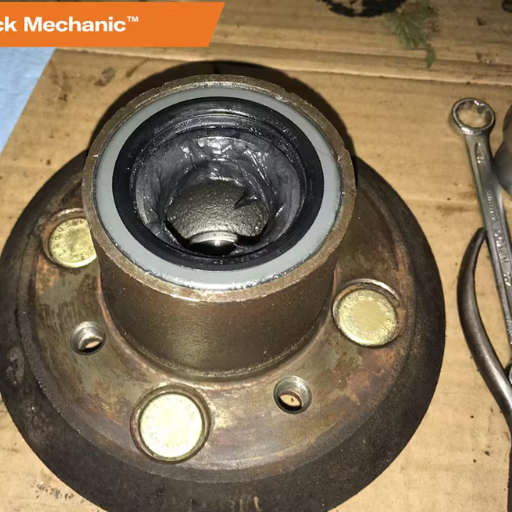
to see which wheel bearing is going bad may involve multiple additional considerations. The above question can be answered as follows:
As a first step, utilize sound analysis as part of the diagnostic approach. When driving, try to pay attention to strange sounds from the wheels. When a front wheel bearing starts to fail, it usually starts making a humming or growling sound that gets worse the faster the vehicle goes. A rear wheel cylinder that is going bad would sound more like a rumbling or grinding noise, however. These sounds serve as good indicators to identify the location of the issue.
A second approach is to utilize tire wear patterns as an observation tool. Look at the tire and the wear on the tread. If there is excessive wear on the inner or outer edge of the side of the tube, the bearing on that side is probably close to failing. Also, make sure to keep in mind that even improper alignment and suspension could cause uneven wear. Hence, it is crucial to take into account other signs and seek the help of a specialist for all the needed evaluation.
With these methods, you should be able to find the area of concern and replace the wheel bearing or ready to take a professional’s help. Remember the most important thing is safety, so if you don’t know or feel confident about the process it is always a good idea to get the help of an expert technician.
Using Sound to Determine Front or Rear Wheel Bearing Issues
detecting front or rear wheel bearing faults through sound offers an inspiring approach for easier diagnosis. During a test drive, one pays attention to unusual noises from the wheels. A growling or humming sound, which becomes more pronounced at greater speeds, usually means that a wheel bearing is on the verge of failing. It should be highlighted that while such a method is quite useful since it allows for establishing a preliminary diagnosis, for an in-depth evaluation, it is recommended to combine this method with other diagnostic ones. Bringing in a professional is always recommended since they will have appropriate experience and make the correct diagnosis and repairs.
Observing Tire Wear Patterns to Identify Problem Areas
I would say the way tires wear can help to find problem areas with wheel bearings. Unusual or unequal wear on tires can be traced to incorrect wheel alignment, suspension system parts, or wheel-bearing surfaces. Several typical modes as far as wear of tires are concerned need to be noted:
- Cupping or Scalloping:This term refers to the phenomenon of tires having edge dips or scalloped patterns on the tread. This could mean that the wheel bearings are damaged or worn which causes the tire to oscillate during its rotation.
- Feathering: Generally, feathering occurs when one side of the tire has track blocks that are wider than the other. It can also be caused by misaligned tires as well as worn out wheel bearings.
- Excessive Inner or Outer Edge Wear: Excessive or irregular wear of inner or outer edges of the tire might mean that the wheel is out of the center or that the wheel bearings are out of function.
- Center Wear: More wear located at the mid region of a tire in comparison to the other sides would mean that either the tire is excessively inflated or that the wheel bearings are damaged.
Don’t forget that the wear patterns of tires are symbolic of many underlying reasons and other tire parameters like the pressure, suspension and the alignment have to be taken into account. When any unusual tire wear characteristics are seen, engaging a competent mechanic will assist in pinpointing the specific problem and making such repairs.
Reference
- SKF Vehicle Aftermarket: 4 Symptoms & Signs of a Bad Wheel Bearing
- Meineke: 6 Signs of a Bad Wheel Bearing
- Reddit: Diagnosing which wheel bearing is going bad?
Frequently Asked Questions (FAQs)
Q: How can I tell if my wheel bearing is bad?
A: Common symptoms of a bad wheel bearing include hearing a grinding noise when you’re driving, feeling the vibration in the steering, and noticing the noise gets louder when you make a turn. These are often signs that replacement is necessary.
Q: What are the bad wheel-bearing symptoms I should look for?
A: Watch for signs like tire noise, grinding noise from the front or rear wheel assembly, and if the wheel feels loose. You might also experience the wheel from side to side movement when you try to wiggle it.
Q: What causes a wheel bearing to fail?
A: Causes of wheel bearing failure can include unbalanced tires, poor driving habits, or damage to components like the tie rod or ball joint. Regular maintenance can help prevent these issues.
Q: How can I check if my wheel bearing is failing?
A: To check if a wheel bearing is failing, jack the vehicle up and try to wiggle the wheel from side to side or at the 6 and 12 o’clock positions. If the wheel feels loose or you hear a grinding noise, the bearing may be bad.
Q: Can driving habits affect wheel bearings?
A: Yes, driving habits can significantly impact the longevity of wheel bearings. Aggressive driving, hitting potholes, and driving over curbs can all contribute to bad bearing symptoms.
Q: How does a bad wheel bearing make noise?
A: A bad bearing typically makes a grinding or humming noise. This noise often gets louder as you increase speed or make a turn, indicating that the wheel spins improperly due to the damaged bearing.
Q: What is the cost to replace a wheel bearing?
A: The cost to replace a wheel bearing varies depending on your vehicle’s make and model. For example, replacing a wheel bearing in a Toyota might differ from other vehicles. It’s always best to consult a professional for an accurate estimate.
Q: Is it safe to drive with a bad wheel bearing?
A: Driving your vehicle with a bad wheel bearing is not recommended. It can lead to more severe damage, such as causing the hub to separate, which is dangerous and may lead to accidents.
Q: How often should wheel bearings be replaced?
A: Wheel bearings should be inspected regularly and replaced when you notice bad wheel bearing symptoms. They typically need replacement every 85,000 to 100,000 miles, but this can vary based on driving conditions and habits.
Q: Can I replace a wheel bearing myself?
A: Replacing a wheel bearing can be complex and requires specific tools and mechanical knowledge. While it is possible to do it yourself, it is often recommended to seek professional help to ensure it is done correctly and safely.
